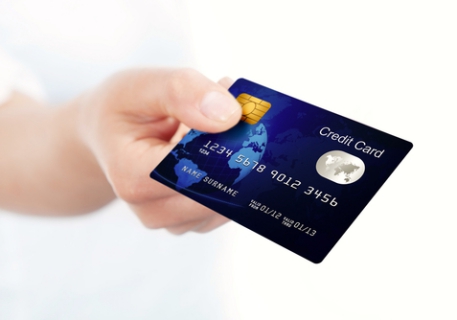
In B2B buyer/seller relations, purchasing cards, or P-cards, typically represent a two-edge sword in that, while they make the payment process more efficient, especially for the buyers, the sellers pay the price in the discount fees they pay their acquiring banks. Buyers, on the other hand, often earn rewards for their card use.
As such, many sellers today don’t accept traditional payment cards because of the cost. But, as PYMNTS.comrecently reported, P-cards provide sellers benefits as well. Many sellers, though, still hesitate to switch from traditional paper-based invoicing and payment methods.
When buyers make the switch to a P-card process, however, efficiency savings can range from 55 percent to 80 percent of the traditional process cost, according to the National Association of Purchasing Card Professionals (NAPCP). Moreover, according to NAPCP calculations, typical buyer savings through P-card use are approximately $63 per transaction. Companies achieve such savings through cost efficiencies achieved by reducing their handling of checks, many of which are made for low-value purchases to many suppliers.
Many suppliers now accept P-cards because it helps them control how they get paid, and how quickly. Large sellers also can negotiate down their discount rates, thus making card acceptance more desirable.
As such, use of P-cards continues to grow, despite the reluctance of many sellers to accept such transactions. Annual P-card spending is expected to increase to $290 billion by 2016, with an anticipated 8 percent to 10 percent compound annual growth rate, RPMG Research Corp. data suggest. The number of companies using virtual versions of the cards (where there is no plastic, just the card information) in 2014 is expected to increase by 21 percent compared with two years earlier.
Smaller sellers lack the leverage to negotiate lower rates. And the fact that many s refuse to accept P-cards runs counter to efforts to bring more efficiency to procurement operations. So what can be done to bring such companies around to the benefits of electronic payments?
A recent article in Spend Matters, an online source of procurement-focused research and commentary,posed the question of what the impact might be if a P-card-accepting supplier asked its customer base to move to a less costly automated clearinghouse (ACH) alternative. In exchange, the seller still would provide the customer base with some level of rebate.
“After all, corporate treasurers have become addicted to the rebate revenue from P-card use by procurement and others in the organization (and on the flip side, feel the pain on being a merchant and paying interchange),” the commentary noted.
ACH-based payments have been around for decades. They essentially use the bank-routing and account information contained in the magnetic ink character recognition (MICR) line from checks to route transactions between accounts electronically instead of via a paper trail.
In the B2C world, such products have had limited success. National Payment Card Association is one of the sole providers left offering such services on the open market, with Cumberland Farms, which ties ACH-based payments to its mobile app customers use at the pump, as one itsmain clients.
In the B2B space, some view ACH as an alternative to P-card use. And at least one vendor sees such products as playing an important role in health care purchasing in particular.
Hap-X (Healthcare’s Automated Payment Exchange) offers an ACH-based payment exchange that removes costs from the procurement process and provides a portal to support payment for health systems and their suppliers. It seems to have caught on with many providers, as some 400 hospitals transact business across the country through Hap-X, which launched originally as the H-card in 2006.
“When it became apparent that key health care suppliers would not accept a card payment due to fees charged by credit card companies, the founders worked with both the health system and suppliers to create an alternative, yet complementary, service that would achieve the objectives of the health system and also be cost-justified by the supplier,” the company notes on its website.
The company keeps payment methods flexible by enabling health systems to select the mode of settlement that best meets their needs. This may include settlement with a credit card or with a formatted ACH payment for the increasing numbers of suppliers that do not accept credit cards. “All modes of Hap-X payments include revenue-sharing rebates, and our goal is to ensure providers receive the most favorable terms and maximum returns available from their suppliers,” the company says.
For health systems, chief benefits from Hap-X include the automation of payments and increased efficiencies through reduction in paper and postage costs, plus they receive an incremental quarterly rebate stream. Suppliers, meanwhile, benefit from expedited payment, plus the payments facilitate automated cash settlement (EDI 820) formatted for their accounts-receivable application. Hap-X also brings them an efficient closed-loop process for electronic order-receipt-payment, and it offers multiple payment options to best support the supplier’s internal processes, interests and objectives.
So, yes, there appears to be a viable alternative to traditional P-cards, in particular for those companies unwilling to take on the expense of traditional card acceptance. And while many hospitals appear to be benefiting from ACH-based B2B payments, might others not similarly benefit?